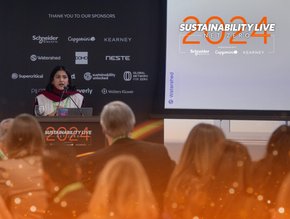Tackling the lithium conundrum and mineral supply sources

Lithium is widely viewed as an essential piece of the puzzle in order for the global energy transition to become reality. Demand for the metal is set to soar over the next decade, driven by mass adoption of electric vehicles and increased storage capacity for renewable energy.
However, our forecasts show there is not enough battery-grade lithium available to meet this exponential demand. As a result, unconventional sources of the metal have been thrust into the limelight, but questions remain over how much of an impact they could have in meeting global needs.
In 2021, available lithium production reached 499 kt LCE. But unparalleled demand of 302 kt LCE from sales of EVs increased by +100%, moving the market into a deficit and contributing to the price
of lithium increasing by +437% from the start of this year. Leaders and policymakers have often failed to grasp the complicated challenges that come with producing more metal.
A lack of upstream investment has resulted in producers being caught short and ill-equipped to deal with surging raw material demand, leading to astronomical price increases.
At first, a range of unconventional lithium sources appears to offer promise in meeting this demand. However, our assessment is that these resources and novel recovery methods are unlikely to reach
commercial production in the timelines envisaged.
While offering attractive recovery rates, it remains to be seen whether direct lithium extraction can be scaled to the levels required to have any impact and unlock the low-grade resources within geothermal brines, oilfield brines and seawater. In our view, their current upside potential is limited and unlikely to be enough to address supply shortages.
Focus on increasing efficiency and recovery at traditional sources
Instead, the market must remain focused on increasing efficiency and recovery at traditional sources. Current recovery rates are poor – typically 60-70% and 30-50% for hard rock and brine,
respectively. Moreover, improving recycling infrastructure will create circularity in a market that prides itself on its green credentials.
Significant investments have been made in the recycling space by companies across the supply chain, including raw material producers such as Glencore, and automotive companies such as Mercedes-Benz, with some in the market calling for further integration, but there is more work to be done.
Ultimately, the dream of mass adoption of EVs may not be possible over the next decade if metal shortages persist and costs remain high. Governments and industry should work together in the
long-term to manage these pressures by investing in the efficiency of traditional sources, improving recycling infrastructure and creating a regulatory environment that enables innovation, not hinders
it.
Otherwise, the EV and renewables markets will suffer, leaving climate goals at risk of remaining a far-flung ambition.
Jordan Roberts is Battery Raw Materials Analyst at Fastmarkets, the cross-commodity price reporting agency covering the energy transition, agriculture, forest products, metals and mining






